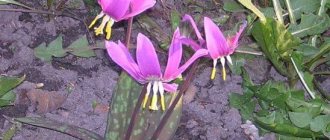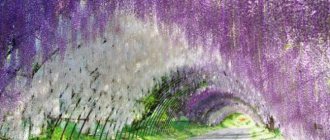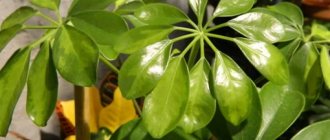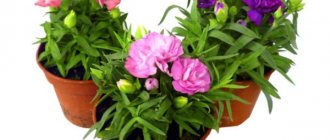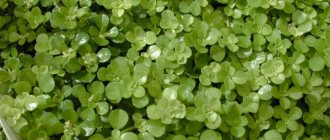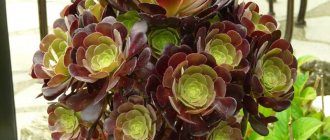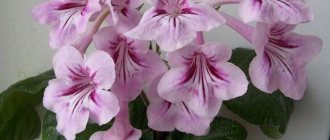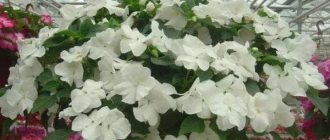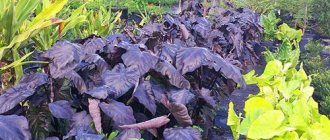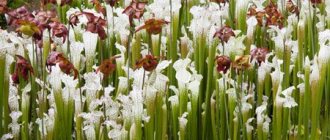- What is plectranthus?
- Decorative types of plectranthus
- Plectranthus coleus
- Plectranthus silver
- Plectranthus blushes
- Plectranthus blooming
- Healing plectranthus aromatic
- What else is plectranthus useful for?
- Caring for plectranthus at home
Recently, a friend sent me a photo of a flower that she was given as a gift called “room mint” and was recommended to make tea from it. I immediately guessed the plant; it turned out to be my favorite plectranthus. Having started to study information about the plant in more detail, I found out that plectratus is not only a spectacular ampel. They actually make fragrant tea from it. They are also used to treat many diseases, to fight moths and even to attract money! Read more about plectranthus, or spur flower, in this article.
Indoor mint: video of a candidate of agricultural sciences on how to care for plectranthus (read more)
Plectranthus is beautiful, fragrant and healthy.
What is plectranthus?
Plectranthus is a semi-succulent perennial with a woody base and grows as an evergreen in the south. Plectranthus has characteristic thick fluffy leaves with a strong pleasant smell; they can be round, heart-shaped or triangular in shape, with jagged, wavy edges. The flowers are in two-lipped spikes or panicles and can be white, pink or lavender. The height of the plant varies greatly depending on the species - from 15 cm to 1 m or more, many species spread along the ground or grow like ampels.
In the middle zone, indoor mint is grown as a heat-loving annual or indoor flower. Primarily valued for its attractive foliage. Plectranthus is an excellent addition to arrangements of colorful annuals. Cuttings can also be planted directly in a flower bed, as the plant grows quickly.
Note! Sometimes plectrnathus is confused with ivy leaf, especially with its variegated form. But budra has smaller leaves and they feel less dense and not at all as juicy as those of plectranthus. The stems of the budra are thin and drooping.
Features of Plectranthus
Home plectranthus, also called indoor mint, is a herbaceous perennial or evergreen shrub, reaching a height of 0.6 to 0.8 m. The root system is fibrous, and the branched stems can grow vertically or be creeping. The rich green or brownish-red ribbed stem has slight pubescence. Fragrant ovoid or oval leaf plates, which are located opposite, are densely pubescent or bare, their edges are finely toothed. On the surface of the foliage there is a variegated pattern or relief of veins. Flowering is observed in the summer; a lush short apical panicle-shaped inflorescence appears on the bush, which includes bisexual flowers of lilac, blue, white or purple. After ripening, the fruits open on their own and contain 4 nuts.
Plectranthus. Care and maintenance at home
Plectranthus coleus
Plectranthus coleoides Marginatus, Plectranthus forsteri) is one of the most popular plant species that can often be found in urban landscaping. In particular, I first encountered it when I saw a magnificent composition in the phytodesign of a cafe. This variegated plectranthus grew in the company of bright red geraniums, which looked stunningly impressive. Later I managed to find out what kind of plant it was and purchased its cuttings. Plectranthus coleus is a small bush up to 25-30 cm high and 50-60 cm wide with green serrated leaves with a maximum length of about 4 cm.
Plectranthus forsteri, variation "Marginatus".
The most popular in decorative floriculture is the variegated variation of Plectranthus Forster “Marginatus”, or “Variegatus” . This is a very bushy plant with bright green jagged leaves beautifully edged with a creamy stripe. In autumn, the plant may bloom with small lavender or white flowers. Stems and leaves are sparsely pubescent, with long and short hairs. When grown in a container, the weight of the leaves causes the shoots to droop, which is why this plant is popular as an ampel.
As for the smell, this type of plectranthus has perhaps the most intense one, most often described as camphorous, but personally I feel that this plant smells of incense. Different people's attitudes towards this scent may differ. But personally (although the smell is harsh) it has a calming effect on me.
What does plectranthus suffer from?
In its natural environment, plectranthus is considered a plant with a strong immune system that is not susceptible to disease. But in enclosed spaces, the proximity of other flowers, dry air, lack or excess of moisture can cause illness or even death.
- Downy mildew (powdery mildew) is a gray coating from the underside of a leaf. The reason is hypothermia and/or waterlogging. What we treat with: Glyocladin, Fitosporin, fungicidal drugs.
- Spider mite. Signs: thin cobwebs and tiny whitish spots. Reason for appearance: proximity to a diseased plant, low humidity level at elevated air temperatures. The problem is complicated by the fact that mites in general and spider mites in particular lay eggs everywhere, including in the ground. Therefore, the first thing to do is to completely change the land. The pest can be destroyed only with the help of acaricidal agents.
- Yellowing and drying of the leaves indicates uncomfortable living conditions. Reconsider the location and frequency of watering.
Plectranthus silver
Silver plectranthus (Plectranthus argentatus) is valued for its attractive, fluffy grey-green foliage that appears to be covered in frost. Most often, we grow its varietal variation “ Silver Shield”. This cultivar is more compact than the species plant and usually grows up to 30 cm in height and up to 60 cm in width. The leaves are ovate, pointed, gray-green with a combed edge, covered with dense silvery pubescence. The stems are erect, but in hanging baskets the bush grows as a hanging bush. Tubular, bluish-white flowers are collected in spike-shaped inflorescences and bloom in mid-summer.
Silver plectranthus (Plectranthus argentatus).
This hybrid can be easily grown from seeds sown indoors 4-6 weeks before the intended planting in a permanent location. I grew silver plectranthus from seeds. The process of growing plectranthus seedlings does not present any difficulties, and its cultivation is similar to sowing coleus. Plants from seeds develop very quickly and reach their peak decorative value by mid-summer, having time to bloom. The mother plant can be brought into the house for the winter, grown as a houseplant, and cut in the spring.
I really liked combining silver plectranthus with beautifully flowering plants with cool-colored petals, for example, purple petunias, blue brachycoma, blue ageratum and others. Plectranthus looks especially impressive hanging from a hanging basket. The aroma of this plectranthus is also similar to incense or camphor, but slightly weaker than that of the coleus.
Reproduction
The plant easily takes root and adapts to a new place with good lighting and moisture. The crop can be propagated in three ways: cuttings, seeds and dividing the bush.
Cuttings
The most effective and easiest way to propagate plectranthus. Small cuttings containing buds are cut from the parent bush. The shoots are rooted in moist soil and left until their own root system appears.
After the roots appear, the young plants are transplanted to a permanent place. A new root system, if all conditions are met (high soil humidity, temperature +20-23 ° C), roots appear in 2-3 weeks.
Dividing the bush
It is also rarely used, since dividing the root system is a lot of stress. The procedure is carried out in the spring during transplantation.
On a note!
Dividing the bush is permissible only with a well-developed root system and shoots.
The roots are divided into equal parts, which are planted in separate pots. For the adaptation period (several weeks), the plant is protected from bright sun.
Planting seeds
At home, this option is rarely used, since in temperate climates the seeds do not have time to ripen. The shoots are also pruned to give the bushes a beautiful decorative look.
But flower growers develop new varieties by purchasing seeds in the store. Plectranthus is grown in seedlings. First, the seeds are distributed over the surface of the moist soil. The pot is covered with film. After 2-3 weeks, shoots will appear.
Seedlings emerge at the stage of appearance of 2-3 true leaves. The transplantation procedure is carried out very carefully so as not to damage the delicate root system.
Plectranthus blushes
Plectranthus purpuratus is an erect, spreading plant with dark green, fleshy leaves that are distinguished by a purple tint on the reverse side; the stems can also be purple. Against the green background of the foliage, the beet-colored veins look very decorative; the young leaves are almost entirely purple, so the bushes look multicolored. The shape of the leaves is slightly rounded and jagged.
Plectranthus purpuratus.
Blooming Plectranthus ruddens.
Inflorescences appear on the tips of the shoots - this is a spike 30-120 mm long, often with two lateral branches. The flowers are tiny, two-lipped, white to bluish speckled. In indoor conditions, this type of plectranthus blooms from September to May. The height of the bush does not exceed 30 centimeters; in pots it also behaves like an ampel.
Not only is it a showy houseplant, it is ideal for rockeries, containers or as a ground cover for shade. I first became acquainted with this plant when I saw it in a flowerbed near a flower shop, where it formed a dense mat that looked very unusual, since this type of plectranthus is very rarely used as a flowerbed plant.
For me, plectranthus turned out to be a wonderful hanging plant for balcony boxes, where it formed a magnificent duet with petunias and pethoa in warm sunny shades (yellow, orange, ivory). Unlike other types of plectranthus, this is one of the most compact species and does not take up too much space in the pot.
When I bring the mother plants in for the winter, they give me their pretty blooms in October, their speckled flowers reminiscent of tiny orchids, and the white petals against the burgundy foliage looking especially attractive. Believe it or not, this plectranthus smells like basil. But its aroma is weaker than that of other species.
Superstitions and signs
Many gardeners do not know for sure whether it is possible to grow plectranthus in their home. There are many signs and superstitions associated with this plant; for example, there is an opinion that it is capable of absorbing negative energy, as well as attracting good luck and wealth into the home. At the same time, the spur flower can bring good luck to both its owner and the person who looked after it at least once. In this regard, such a plant is perfect for both an apartment and an office.
Plectranthus (Indoor mint). Pruning and rooting. (part 4)
Plectranthus blooming
Flowering plectranthus (Plectranthus neochilus) is a low ground cover plant with velvety, pubescent foliage. The leaf blade is bluish-green due to pubescence. “ Dwarf Variegated” with a light wide leaf border is more common The leaves are medium-sized, rounded with slightly jagged edges. These are low bushes, usually they do not exceed 25 cm, and they grow a little slower than other species.
Flowering plectranthus (Plectranthus neochilus).
This variety of spur flower is distinguished by the longest attractive flowering, since its spike-shaped inflorescence is denser and denser and consists of bright blue two-lipped flowers. In its homeland and in the southern regions, the flowering spur flower is in bloom for a long time, almost all year round. Attractive spikelets rise above the carpet of variegated leaves to a height of 15 cm and look very impressive, slightly reminiscent of the flowering of creeping tenacious.
Most often this species is used as a ground cover, but it can also be used as an hanging plant. Although, in my experience, flowering plectranthus does not grow so quickly and does not form a very long ampel from cuttings over the summer. On my balcony, this interesting, delicate plant looked very good in hanging baskets in combination with pastel-colored annuals, such as pink petunia and bacopa. In the plant’s homeland, it is believed that the flowering plectranthus, with its strong and pungent odor, scares away snakes from people’s homes. The smell of this type of plectranthus is almost identical to bitter wormwood.
Main types and varieties
More than 250 species of plectranthus are known. Some of them are found in the wild, others can only grow at home. There are varieties that can be grown in flower beds or in the garden.
Coleus Plectranthus (p. coleoides)
A variety of plectranthus that has the largest leaves and straight stems. The height of this species of spur flower reaches a meter. It has a pleasant subtle aroma.
The leaves grow up to 8 cm and may have a beige or snow-white edge. The edges are jagged, the tip is pointed. This variety is characterized by the appearance of light spots or stripes on the leaves.
Plectranthus fruticosa (p. Fruticosus)
Shrub plectranthus grows into a beautiful bush with numerous branches and leaves. Exudes a pleasant aroma that repels moths. The branches are strongly drooping with a brown tint.
The leaves have jagged edges, about 6 cm long. They are located alternately along the entire length of the shoots. Blooms at the end of winter. Small flowers are collected in false whorls and have a slight bluish tint.
Plectranthus oertendahlii (p. Oertendahlii)
A very decorative type of crop, the shoots of which spread and grow quickly. Valued by gardeners for its original decorative foliage. A beautiful pattern of green spots and streaks appears on the top of the leaves. The bottom of the leaf blade is covered with abundant red-pink hairs.
Several varieties of Plectranthus Ertendahl are the most popular among gardeners: Uvongo, Silver Stars, Limeligth.
Plectranthus hadiensis tomentose (p. Hadiensis)
A miniature variety that needs a lot of natural light to grow. It easily takes root in open areas, where it grows up to 0.5 m. In a home pot, the bush is no more than 20 cm. The culture is represented by a drooping bush. Looks great in hanging flowerpots.
The leaves are fleshy, oval, light green. There are no visible veins on the surface. The leaf blades are abundantly covered with villi. It emits a pleasant mint aroma that repels many pests.
Plectranthus whorled (p. Verticillatus)
A perennial crop with evergreen foliage, which is represented by small bushes with erect shoots. The bushes are compact, covered with foliage. The arrangement of the leaves is opposite, the petioles are brown with a reddish tint.
Healing plectranthus aromatic
Plectranthus tea is usually brewed from only one species of spur flower, Plectranthus aromatica. Although it does not have such an attractive and even quite ordinary appearance, compared to its decorative counterparts, this plant is famous for its medicinal properties, and also has some other uses in everyday life.
Plectranthus amboinicus is distributed mainly in Tropical Africa, Asia and Australia. This is a perennial plant with thick, succulent tetrahedral stems of brown or green color and fleshy green leaves of a round shape with a wavy edge. It grows in the form of branched, spreading bushes from 50 to 100 cm in height. Sometimes this plant is also called “cubano oregano” because its smell is very reminiscent of the spice oregano (oregano).
Plectranthus amboinicus (Plectranthus amboinicus).
As a medicine, plectranthus aromatica is used to treat a wide range of diseases. A decoction of the leaves is primarily used for respiratory diseases accompanied by nasal congestion, bronchitis, and sore throat. It also helps with diseases of the digestive system (dysentery, diarrhea, colitis, etc.). It is believed that fragrant plectranthus can be effective in urolithiasis, and also has antiepileptic, antitumor and antimicrobial properties.
The leaves have a strong aroma and are used as a seasoning either fresh or dried. Most often, the plant serves as a substitute for oregano and is suitable for filling poultry, beef, lamb and game, and is also added to soups and pizza.
Medicinal plants: name, description, medicinal properties (read more)
Tasters of plectranthus tea are divided on its taste and aroma. To some it seems more like oregano, to others like lemon balm, but since the plant contains menthol in large quantities, the taste of this tea is still similar to mint. At the same time, many also note that the menthol taste is too strong, and that plectranthus tea is still inferior in taste to real mint tea.
To brew tea from plectranthus, you need to pick a few (3-4) medium-sized leaves, pour boiling water over them, cool and add sugar to taste. Plectranthus deciduous tea has a soothing and anti-inflammatory effect.
Note! The plant also has contraindications. Plectranthus is not recommended for pregnant and lactating women, although in India this drink is used in a short course to improve milk production. It is also best not to offer this herb to children under 12 years of age. People with sensitive skin should avoid contact with plectranthus foliage as it may cause irritation. It is also better for those with hypotension and those suffering from varicose veins to avoid using the spur flower as food.
Useful properties of plectranthus
Meanwhile, indoor plectranthus in the countries of the tropical and subtropical zones where it comes from is used in folk medicine. The range of beneficial properties of indoor mint is impressive! Based on the raw materials, ointments and tinctures are prepared to cure many ailments.
- Tea made from leaves and flowers will help relieve dry cough.
- The water infusion is used as a sedative and choleretic agent.
- Alcohol tincture is recommended for the treatment of a variety of diseases of the gastrointestinal tract: from diarrhea to helminth infection.
- Ointments do an excellent job with skin problems: eczema, boils, burns, cuts, etc.
In addition, spur flower (as the translation of the name sounds) is one of the most consumed seasonings in the countries of the South Asian region. Moreover, not only leaves are used, but also flowers. There is another nice bonus. Essential oils, which are included in large quantities in the structure, provide an aroma that repels moths and mosquitoes.
What else is plectranthus useful for?
Plectranthus can help eliminate itching and inflammation after an insect bite; to do this, apply a crushed leaf to the bite and wrap it with a bandage. This plant releases phytoncides, so it improves the health of the air in the house, killing pathogenic bacteria. It is believed that if a plectranthus bush grows in the bedroom, it will have a beneficial effect on the nervous system, promoting relaxation, relief from anxiety and good sleep.
Plectranthus leaves in gauze bags placed in a closet can protect its contents from moths, since the insect does not like the smell of the plant. One of the popular names for plectranthus is “moth tree”.
Plectranthus coleus in the composition.
Plectranthus blushes in the composition.
Also, plectranthus is another variant of the “money tree”. Many flower growers endow it with the ability to increase the well-being of the person who cares for it.
Description of Plectranthus
Plectranthus has many names: peppermint, Swedish ivy, spur flower, moth tree. Varieties can be ampelous or shrubby. The plants are characterized by flexible and beautiful shoots and beautiful carved leaves.
The leaves are most often arranged in pairs. Most varieties exude a pleasant minty aroma. Insects, in particular moths, are very afraid of him.
Caring for plectranthus at home
Plectranthus requires well-drained and fertile soil. Before planting, add some compost, shredded rotten leaves or other organic material to the soil. Although the plant is fairly drought tolerant, it grows best with occasional watering, especially in hot, dry weather. Pinch the plant from time to time during active growth to keep the bushes compact and dense. Although plectranthus is relatively resistant to pests, in indoor conditions it can sometimes be affected by spider mites, whiteflies and mealybugs.
Plectranthus blooming in the composition.
Ideally, spur flower should be grown in partial shade or dappled shade, so the leaves will retain a beautiful bright shade. If a plant receives too much sun, its leaves will turn yellow, begin to curl, and become unsightly. Variegated forms are more resistant to bright sunlight. It is best for plants to spend summer outdoors, where bushes can grow in a flower bed or in container arrangements. At the end of summer, the queen cells are taken indoors for the winter.
In an apartment, plectranthus behaves like an ordinary houseplant; it should be placed in a bright window and watering should be reduced. The main thing is that the temperature during wintering of indoor mint does not fall below plus 10 degrees. In spring it is very easy to propagate by cuttings, which quickly take root in water.
Brief description of cultivation
- Bloom . The spur flower is cultivated as an ornamental foliage plant.
- Illumination . It grows best in partial shade, but can also be placed in a location with indirect, bright light.
- Temperature regime . During active growth - from 18 to 25 degrees, in winter - from 12 to 16 degrees.
- Watering . Moisten the soil mixture in the pot often and generously immediately after it dries to a depth of about 20 mm.
- Air humidity . On hot days, as well as in a room with operating heating devices, it is recommended to moisten the foliage every day with water at room temperature; instead, you can pour wet pebbles into a tray and place a container with a flower on it.
- Fertilizer . During the growing season, once every 15 days, a complex fertilizer for deciduous plants is used. At other times, there is no need to feed the spur flower.
- Pinching and trimming . In spring, the stems are shortened by ½ part. And during active growth, the upper parts of the shoots are systematically pinched.
- Transplant . Until the plant is 4 years old, it is replanted regularly once a year, and older bushes are subjected to this procedure only if necessary. Transplantation is carried out at the beginning of the growing season.
- Reproduction . By dividing the bush and cuttings.
- Harmful insects . Mealybugs, aphids and spider mites.
- Diseases . Downy mildew (peronosporosis).
- Properties . In some species, the foliage has a diaphoretic, analgesic, choleretic and laxative effect.
How to propagate and transplant plectranthus at home
A novice gardener should carefully read the rules for transplanting and propagating plectranthus, because the full development of a pet depends on this. It is important to choose the right soil mixture and the right time for transplantation and propagation.
Propagation by cuttings
Mint can be propagated in this way at any time of the year, but experienced gardeners advise doing this during spring pruning. The procedure is carried out as follows:
- Healthy cuttings are cut, the length of which should be at least 7 cm, and several lower leaves are removed.
- Cut cuttings are dipped in a special growth stimulator, for example, Kornevin, and placed in a moist mixture of sand and peat.
- Containers with plants are transferred to a warm place with diffused lighting.
- Rooting occurs within 2-3 weeks. At this time, it is important to maintain optimal humidity and regularly water the cuttings using a spray bottle.
Cuttings can also be rooted in water, but do not forget that the liquid must be changed every three days. Rooted plants are planted several at a time in small containers, the bottom of which is lined with a layer of expanded clay. The first feedings can be carried out only after 1.5 months.
Dividing the bush
The flower is propagated in this way during transplantation. The plant must be healthy, mature enough and bushy. The root system is divided in half so that each part has well-developed roots and stems. The delenki are planted in separate flowerpots and shaded a little for the first time. Watering after planting should be done moderately, and during the first few days watering should be avoided altogether. Further care is no different from caring for adult plants.
Transfer rules
Up to 3-4 years, indoor mint is replanted annually, and an adult flower - once every 3 years (subject to proper feeding). The procedure is carried out in early spring, when the growing season is just beginning.
Transfer
To begin with, select the optimal composition of the soil, the acidity of which should vary within pH 6. The soil mixture is made up of the following components:
- turf soil;
- humus soil;
- leaf soil;
- sand.
The container for planting is selected deep so that powerful roots fit into it. Expanded clay is most often used as a drainage material, with which the flowerpot is filled to about a third.
You may be interested in:
Brunera: planting and care in open ground Brunera is a perennial that reaches an average height of 50-70 cm. Gardeners prefer to grow two types:...Read more...
Plectranthus shrubby
One of the largest shrubs is covered with single-color, heart-shaped leaves with a wrinkled, slightly pubescent surface. With proper care, the plant can reach 1 m in height. The shoots are also covered with fluff.
The leaves of Plectranthus fruticosa have a very strong mint scent that can repel moths. For this reason, the plant is often called the “moth tree.”
Individual characteristics of the species include:
- Active growth. The bush very quickly grows a leaf cap and forms new shoots, especially in the summer, and has almost no dormant period. With the onset of autumn and before the beginning of winter, the growth of the flower slows down a little, but does not stop completely.
- Abundant flowering. In midwinter, this common species of plectranthus produces many small blue spikelet-like inflorescences that emit a fragrant aroma. Flowering lasts until the end of spring.
Some gardeners advise picking off the inflorescences so as not to spoil the overall decorative appearance of the bush.
Botanical description of the plant
Plectranthus is a perennial houseplant that comes from the Lamiaceae or Lamiaceae family. In nature, three types of plants are grown - shrubby or herbaceous type. Plants are erect, up to one and a half meters high. Due to its structure and evergreen leaves, plectranthus is popular among experienced and novice gardeners. Among the hybrids there are annual representatives that are used as decoration.
Among the people, plectranthus goes by a large number of names - indoor mint, spur flower, Swedish ivy, moth tree. The plant is valued for its hanging stems, since the flowering bush does not have a decorative appearance. The stems of plectranthus hang from the pot, due to which the grass is grown in flowerpots, on balconies and loggias.
The rhizome of the spur flower has a branched surface with a large number of basal shoots. Several stems, tetrahedral in appearance, appear from the base of the rhizome. The stems become very fluffy and hang over the pot as they grow. Abundant foliage gives the bush its fullness. The surface of the stem is flat and smooth. There are varieties with small fibers on the surface of the stem. The shoots are covered with a purple-brown color, due to which they make the bush more impressive.
The leaves are located over the entire surface of the plectranthus. The leaf blade is rounded with smooth edges and a rounded end. Some species have angular edges. The surface of the leaf is covered with villi. On all types of plants, the foliage is covered with an even network of veins that stands out from the color of the leaves. The decorative effect of the leaves lies in the presence of violet-brown shades of the veins and border along the edge of the leaf, which are combined with the rich color of the plate itself.
The leaves are attached to the stem using small petioles that do not have stipules. The hairs located on the surface of the leaf are aromatic. Rubbing the plant's foliage releases the delicate minty scent. This led to the name “room mint”. The size and shape of all leaves are almost the same. Thus, different varieties can have leaves from 2 to 7 cm in length. Depending on the variety, the surface of the sheet can be matte or glossy.
The flowers of the plant are not highly decorative. Appear on the plant in spring. Plectranthus blooms with small multi-colored buds collected in whorls. There are varieties with white, purple or pink flowers. The inflorescences are located on long and thin peduncles rising above the foliage.
Since the presence of inflorescences spoils the overall appearance of plectranthus, some gardeners recommend removing them from the plant. Fertilization occurs through pollination. Pollen is carried by insects.
